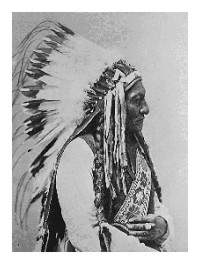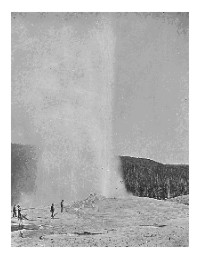
Photo above: President U.S. Grant. Courtesy National Archives. Right: Valley of the Yellowstone, 1871, by William Henry Jackson, Hayden Survey. Courtesy Library of Congress.

U.S. Timeline - The 1870s
The Centennial Decade. Madison Square Garden History Begins.
-
1879 Detail
-
To the 1880s
Click here to Sponsor the page and how to reserve your ad.
-
Timeline
1879 - Detail
February 15, 1879 - President Rutherford B. Hayes signs a bill that allowed female attorneys to argue in Supreme Court cases.

It was the third sesssion of the 45th Congress with the House of Representatives represented by 155 Democrats, 2 Independent Democrats, and 136 Republicans. The Senate was split 36 Democrats, 39 Republicans, and 1 Independent. There was no split regarding gender. They were all men. So this did not help the case of Belva Lockwood. An attorney and future Presidential candidate, Lockwood wanted to argue a case in front of the Supreme Court. She had been denied that right by Chief Justice Morrison Waite (center above) in November 1876, but that would not halt her intent. There had been an 1872 ruling by the Supreme Court on a state barring women from their state bar, upholding it due to state's rights. So Justice Waite and the court stood firm, stating that they would only change their practice if required by statute.
Lobbying President Ulysses S. Grant, who had handed her a law degree after initial denial by the university she attended, Lockwood pushed for three years for a bill from Congress. The House of Representatives finally took up the bill on February 21, 1878. It passed 169-87 with 36 not voting. How did the split of those men go. Republicans: 114 yes, 10 no, 14 not voting. Democrats: 55 yes, 76 no, 21 not voting.
It took until the next session of the Forty-fifth Congress to bring a vote to the floor. Finally, on February 7, 1879, the bill was brought up in front of the Senate. It passed 27-2 on the Republican side with 9 not voting, with Democrats voting 12 yes and 17 no with 7 not voting. The Independent Senator, David Davis, also voted no.
On February 15, 1879, President Rutherford B. Hayes made it official, signing the bill allowing women the right to argue in front of the Supreme Court.
Text of An Act to Relieve Certain Legal Disabilities of Women.
Be it enacted by the Senate and House of Representatives of the United States of America in Congress assembled, That any woman who shall have Women admitted been a member of the bar of the highest court of any State or Territory or of the Supreme Court of the District of Columbia for the space of three years, and shall have maintained a good standing before such court, and who shall be a person of good moral character, shall, on motion, and the production of such record, be admitted to practice before the Supreme Court of the United States.
Approved, February 15, 1879.
First Case Argued
Belva Lockwood herself was the first woman who qualified to argue a case, and did so, in 1880. In Kaiser vs. Stickney, Lockwood defended her case for twenty minutes, but lost. She would get another chance in 1906, arguing to victory in the case of the United States vs the Cherokee Nation. She argued that the tribe had not been paid in full for the land ceded in Georgia in 1835, seeking one million dollars plus interest. The Cherokee Nation got a judgement of five million dollars.
What had Lockwood been doing in those intervening years? She ran for President on the National Equal Rights Party ticket in 1884 and 1888, the first woman to appear on official ballots for the office despite women not having the right to vote until 1920. Lockwood gained approximately 4,194 votes in 1884.
Since 1880, over 1,400 cases have been argued by women in the Supreme Court of the United States.
History of Belva Bennett Lockwood
Lockwood was born Belva Ann Bennett in New York State in 1830, married at the age of eighteen, but as a widow soon after needing employment and education, enrolled in Genesee Wesleyan Seminary, graduating in 1857. She worked in education after graduation, headmistress of various schools, and began to adopt the positions of suffragette Susan B. Anthony, whom she met while living in New York. Moving to Washington, D.C. in 1866, she was eventually admitted to the National University School of Law, now part of today's George Washington University School of Law (after denial at Columbian, the former name of George Washington Law), completing her courses in 1873. However, the school refused to grant her a degree because she was a woman, until her appeal to President Ulysses S. Grant in September of that year caused the University to reverse its course within one week. Admitted to the District of Columbia Bar, Lockwood continued to gain a small practice despite the discrimination of the day, eventually lobbying for the right to practice at the Supreme Court.
Photo above: Montage of Belva Lockwood, Supreme Court Chief Justice Morrison Waite (center), President Rutherford B. Hayes (right). Lockwood photo, 1880/1890; Waite photo, 1870/1880; President Hayes photo, circa 1877/1893. Brady-Handy Photo Collection. Courtesy Library of Congress. Image below: Lithograph cartoon illustration "Our Overworked Supreme Court," 1885, Joseph Ferdinand Keppler, Keppler and Swartzmann. Courtesy Library of Congress. Info Source: "On This Day, Women First Allowed to Argue Supreme Court Cases," 2019, Scott Bomboy, Constitutioncenter.org; govtrack.us; History of the House; Library of Congress, Statutes at Large, 45th Congress; Wikipedia Commons; "A DAR Museum Loan to the Supreme Court of the United States," 2018, Alden O'Brian, Daughters of the American Revolution.

History Photo Bomb
Photo above: Montage of Belva Lockwood, Supreme Court Chief Justice Morrison Waite (center), President Rutherford B. Hayes (right). Lockwood photo, 1880/1890; Waite photo, 1870/1880; President Hayes photo, circa 1877/1893. Brady-Handy Photo Collection. Courtesy Library of Congress. Image below: Lithograph cartoon illustration "Our Overworked Supreme Court," 1885, Joseph Ferdinand Keppler, Keppler and Swartzmann. Courtesy Library of Congress. Info Source: "On This Day, Women First Allowed to Argue Supreme Court Cases," 2019, Scott Bomboy, Constitutioncenter.org; govtrack.us; History of the House; Library of Congress, Statutes at Large, 45th Congress; Wikipedia Commons; "A DAR Museum Loan to the Supreme Court of the United States," 2018, Alden O'Brian, Daughters of the American Revolution.






